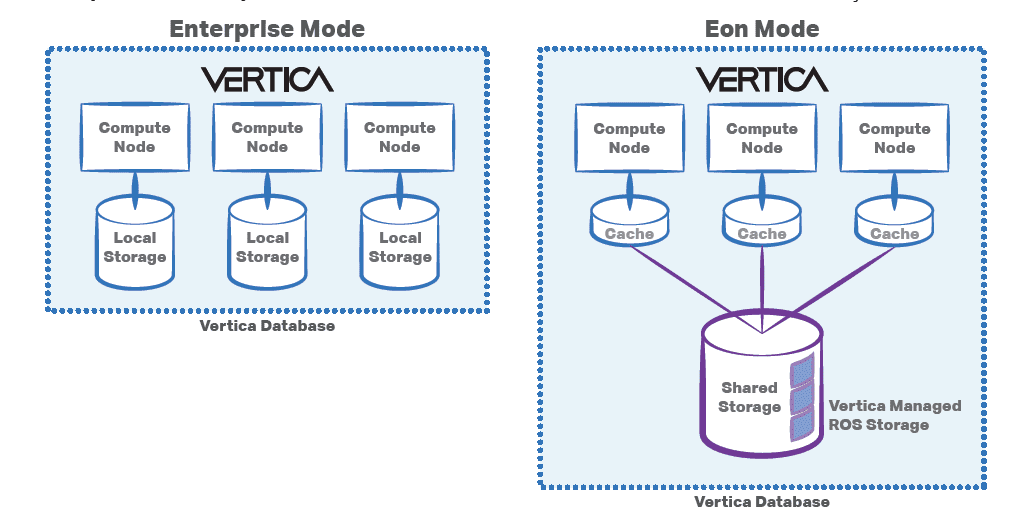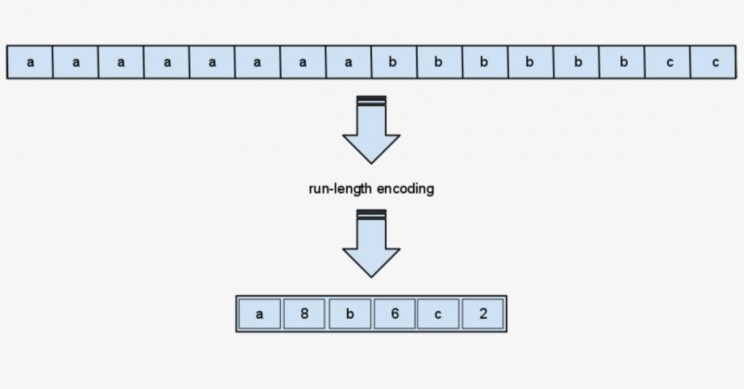
Vertica is a database management tool known for its fast query performance and scalability. Vertica enables organizations to better manage large amounts of data, while providing exceptional query performance. Its standard SQL interface eliminates the need to learn a new language, allowing organizations to focus on more important issues. It also allows for a seamless integration with numerous analytical applications, giving organizations the ability to integrate their data with ETL tools such as Alteryx and Tableau.
Part of Vertica’s success stems from utilizing a columnar orientation. Traditional row storage databases eat up resources by reading all columns before executing the desired result, whereas a column store database only reads in columns referenced in the query. This allows Vertica to execute queries faster than other platforms.
Vertica’s Eon Mode takes fast query execution to the next level by separating store and compute. This enables Vertica to support variable workloads in the sense that it scales back or ramps up as your organization’s workload varies. Eon Mode is available on Amazon Web Service and Google Cloud or on-premise with the use of Pure Storage FlashBlade.

Vertica utilizes advanced Data Encoding and Compression, which reduces the overall storage footprint of an organizations’ data. By assessing the data type, table cardinality, and sort order, Vertica is able to decide upon the best compression method in order to store more data in a smaller amount of space. This ultimately saves organizations money by reducing the amount of storage necessary.

One of Vertica’s many noteworthy capabilities is its ability to continue running in the event of a node malfunction. A copy of each node within a cluster is made and placed in a different node (referenced as a buddy node). This ensures that the database will continue functioning in the event that a particular node goes down, as the node copy can step in its place.
Massive parallel processing, alongside buddy nodes, gives queries access to all nodes within a cluster in an effort to eliminate a single source of failure should a node malfunction. MPP allows for faster performance or the ability to facilitate more users accessing the cluster.
Multiple deployment options make Vertica even more accessible. Vertica can be deployed in the cloud, in a hosted environment, or in a hybrid of the two such as Hadoop. Numerous deployment options, as well as the numerous features discussed above, give organizations the flexibility needed to be successful.
A Buyer’s Guide
to Data Warehousing
in the Cloud
Machine Learning as a Growth Engine for
Telcos in the Age of 5G
How Diverse Cloud Deployment
Boosts the Value of Analytics
and Future Proofs Your Business
Join Capitalize Analytics and Vertica for an evening of Brews and Big Data!
On Wednesday, Oct. 28,2020 Capitalize hosted a Brews and Big Data event with Vertica. The event will kick off with a beer and cheese pairing with an expert beer guide […]

